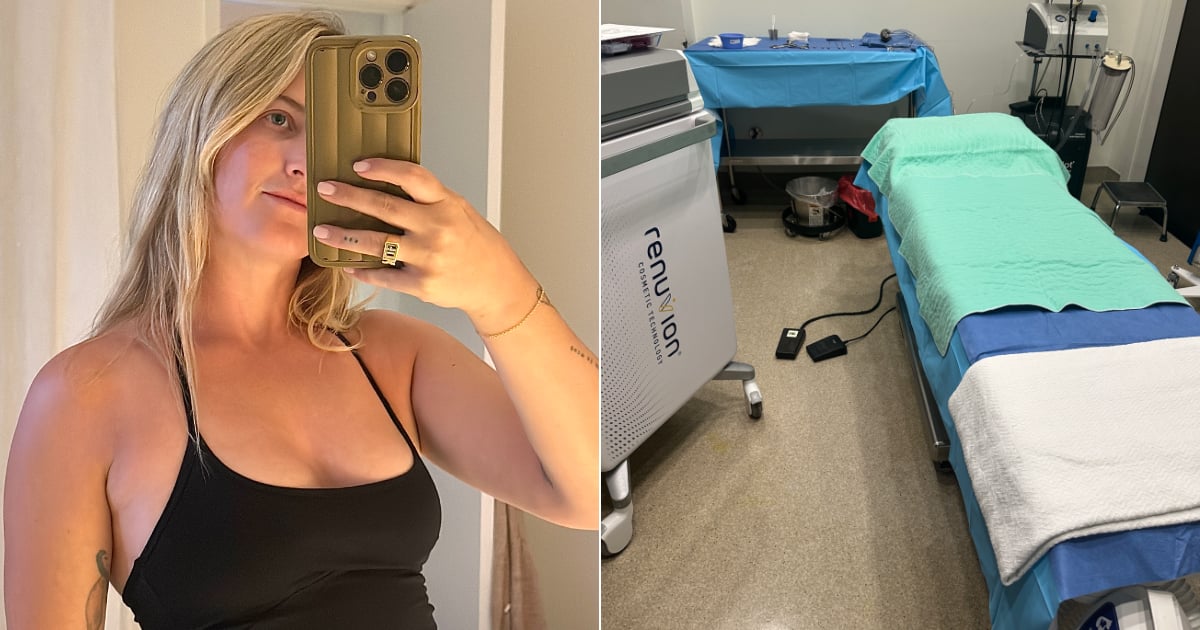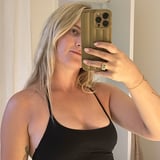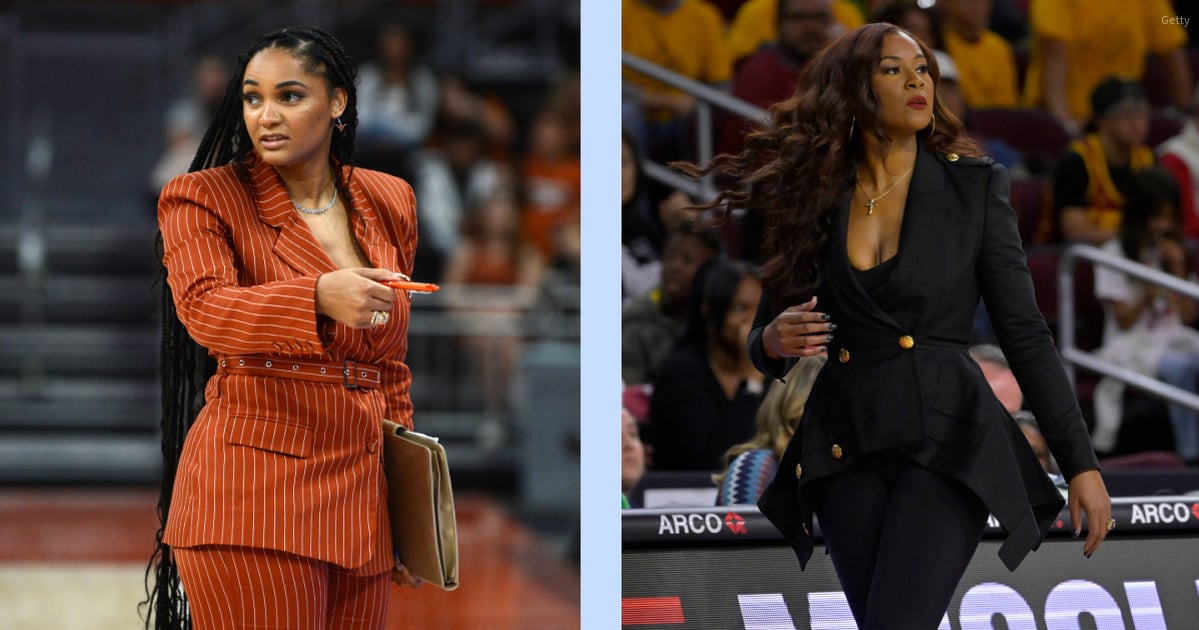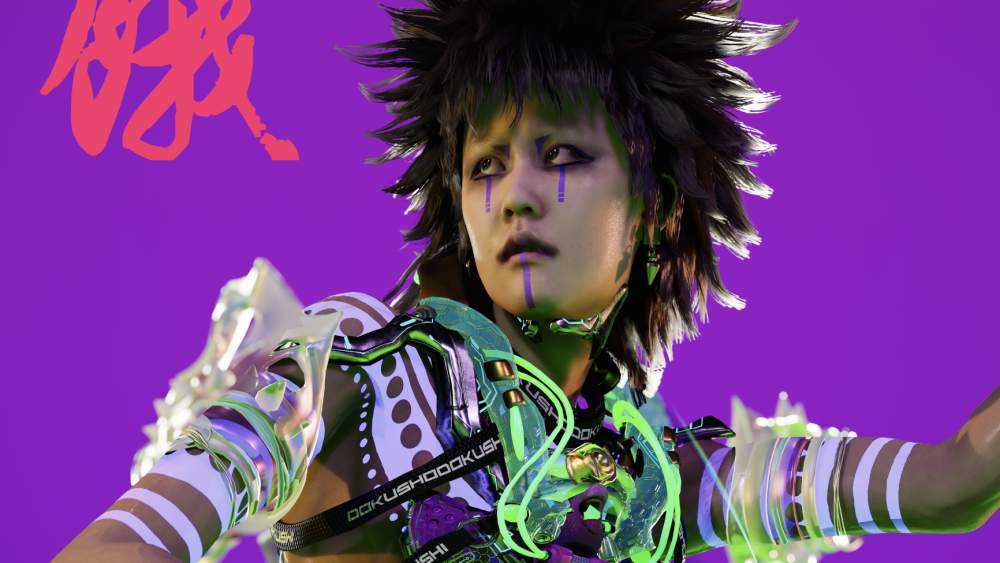I wouldn’t say I’ve always hated my boobs, but I have always dreamed of what it would be like to have fuller, more voluptuous breasts. For most of my life I’ve been a 34B cup, and I’m actually totally fine with the smaller size. It’s more the shape: I always longed for round, perky boobs instead of my more triangular form.
Now that I’m approaching 35, I started to notice they’ve been looking a little droopy, with a bit of lost volume on the top. A traditional breast augmentation with implants – and all the potential side effects and scarring that come with going under the knife – never appealed to me, so I started to explore my non-surgical options.
My goals were a slight lift and added plumpness; I wasn’t interested in a large increase in size. After plenty of research, I came across AirSculpt and its Up a Cup treatment, which uses a combination of liposuction and a fat transfer, all without the use of anesthesia. You read that right: you’re awake during the whole thing. While it sounded a little daunting to be awake while fat was sucked from my body and then inserted back into my breasts, I decided to go for it.
Keep reading for a detailed account of my experience, as well as before and after photos of my results.
What Is AirSculpt?
AirSculpt is a procedure that removes unwanted subcutaneous body fat – fat that is then able to be transferred to other parts of the body, like your breasts, with a fat transfer procedure. The procedure is essentially liposuction while awake, which sets it apart from how lipo has traditionally been performed. This means less downtime, no complications that come with anesthesia, and none of the side effects that come with the heavy-duty pain medications that traditional liposuction patients take.
Aaron Rollins, MD, board-certified plastic surgeon and founder of AirSculpt, explains that AirSculpt technique uses a much thinner vibrating cannula than traditional liposuction to remove the fat cells. “We’re removing fat cell by cell,” he says. “Each fat cell is kind of like a water balloon. If you pop the water balloon, it’s a dead cell. You can put it in the breast but it won’t survive. So we’re taking out each [fat cell] like plucking berries off a bush instead of scraping flesh out. Our survival rate is excellent because we’re so gentle.”
How the AirSculpt Up a Cup Treatment Differs From a Breast Lift
The biggest difference between the AirSculpt Up a Cup treatment and any other traditional breast augmentation – from breast lifts to silicone breast implants – is the surgical procedure itself. Breast lift surgery may give you some more room for customization; meaning, the doctor can change the nipple placement and remove excess skin for a more dramatic lift. However, it also creates lasting scars, and there is the potential for loss of sensation in the nipples and breasts. The same goes for breast implants.
Dr. Rollins explains that with the Up a Cup procedure, your own fat is being used to plump up the breast. “It’s your own tissue, it moves naturally, and it grows and shrinks with you,” he says. How much plumping depends on what he calls your “envelope,” which is how much fat your breast can actually take. About 25 percent of the fat that gets put into your breasts will reabsorb into the body, so they purposely overfill during the procedure to compensate for that eventual slight shrink. “I call it the ‘Levi’s shrink-to-fit’ concept,” Dr. Rollins says. “We make them bigger than they’re supposed to be so that when they shrink, they’re the right size.”
It’s important to note that the Up a Cup procedure may not provide as dramatic a reconstruction and major lift as a surgical breast lift or the extreme level of increased size you’d get with implants. You want to be sure to go into the procedure with level expectations – if you have some loose breast skin, a slight sag, or want a plumper look, you’re the right candidate for Up a Cup.
My AirSculpt Experience
The Consultation
The first stop on my AirSculpt journey was the initial consultation at the Beverly Hills office. I brought a list of questions with me, along with several photos of what my ideal breast shape would be. My surgeon, board-certified plastic surgeon Michael Hakimi, MD FACS, took me through every aspect of what I could expect with the procedure, aftercare, and the results.
He explained that I have something called “constricted breasts,” also known as “tubular breasts,” which are more oval shaped with nipples that point down. There’s nothing wrong with tubular breasts – in fact, Dr. Rollins says they are very common – but I did always pine for a more perky, round set.
Dr. Hakimi explained that no matter what route I go in for a breast augmentation (fat transfer or implants), I’m never going to get the round, teardrop shape of the boobs in the photos I brought. This is because I don’t have enough skin in the space between my nipple and the bottom of my breast. Essentially, the shape you have is the starting point, and they can just enhance it from there, not completely change it. That said, Dr. Hakimi was confident I would be happy with the amount of plumpness I would get to fix the sloping at the top of my breasts and the slight drooping.
Because I decided to remove the fat from my stomach, Dr. Hakimi walked me through what the liposuction process would be, along with the fat transfer. I was hoping to be able to remove the fat both from my stomach and my arms all in one go, but Dr. Hakimi explained that because they fill your body with a saline and lidocaine solution to numb everything, there’s only so much your body can take in depending on your weight. Dr. Hakimi decided that it would be pushing it too far to include my arms as well, so we went with just an “Abdomen 360” for the liposuction, meaning fat would be taken out from my upper and lower abdomen, as well as my lower back.
The Week Before Surgery
In the week before your Up a Cup procedure, you should avoid alcohol and blood thinners like OTC pain killers. The AirSculpt team also advised me to make sure that my post-op meals were low in sodium, since salt can make your bruising and water retention worse. Because I wasn’t sure how I would be feeling in the days after the procedure, I prepped a bunch of low-sodium meals and grabbed some no-salt snacks and fruit to have on hand.
Because you don’t want to put any pressure on your breasts for a while and since you’re wearing a compression onesie, you’re going to want a bunch of loose clothing ready to go. I bought a couple beachy kaftans and oversize sweats, which came in very handy.
The nurse should also send your medications to your pharmacy for pickup so you have them ready when you get home from surgery. You’ll likely get a seven-day course of antibiotics, and some prescription strength Tylenol and Ibuprofen to alternate.
The Day of Surgery
On the day of your surgery, you may want to take a shower since you won’t be able to do so again until 48 hours after your procedure (mine was on a Wednesday, so my next shower would be Friday afternoon). You also should eat a good meal before since some of the medication they give you might make you feel lightheaded and nauseous if you haven’t eaten, and you’re likely not going to want to eat when you get home afterward. They also advise that you need to come hydrated and ready to pee since they will do a pregnancy test.
When you get to the AirSculpt surgery center, you’ll meet with your nurse and surgeon, who will go over all the aftercare points. They’ll give you a bag filled with Poise maxi pads (you’re going to get padded with these to catch the drainage out of your incision points), some puppy pee pads to lay out on your bed to catch any drainage, an antiseptic soap and a pre-soaked sponge to use on your open incisions during your first shower, and an instructions sheet.
Then, your surgeon will mark up your body with a marker à la Samantha Jones in Sex and the City (minus the freak out) and take photos for their reference. From there, it’s into the surgery room, where you’ll get an injection of Demerol (a pain medication), a 2mg Xanax to help calm any nerves, and the first antibiotic pill of your seven-day course.
The Surgery Process
After the Demerol shot and Xannax, I was feeling pretty zen, but the nurse showed me where I could find the nitrous oxide machine should I need it during the procedure (I would). Once I was undressed and on the table, the nurse wiped me down with antiseptic soap to prepare. Then, there are essentially four steps in the AirSculpt process: numbing the body, removing the fat, laser skin tightening, and the actual fat transfer.
Step 1: First, the incisions are made with the patented AirPen, a squirt gun-like device that uses pressurized air to numb the surface of the treated area and make the incision. The incision points will vary depending on where you’re removing fat from, but for me, there are two at the base of my pubic bone, one on either side of my hips, one on either side of my ribcage at my bra line, one at the top of my butt crack, and one in my belly button. On my boobs, there is one tiny incision on the side of my nipples and one tiny one at the base of my breasts. Then, the surgeon will use the incision points to pump the lidocaine and saline solution into your fat. I wouldn’t say this was painful, but it definitely wasn’t comfortable, with the worst part being when I could feel the poke of the needle under and around my ribs. That being said, I was still awake and talking to Dr. Hakimi at this point, with just a little help from the nitrous.
Step 2: Then came the actual liposuction of the fat from my abdomen. This is where I started to go a little ham with the nitrous and things get a little fuzzy. This portion of the procedure is what took the longest – maybe an hour and a half or so – because the surgeon is being so precise and careful not to damage any of the fat cells that they need to harvest to put back into your body. The company says that this feels like a deep tissue massage; I found it’s quite a bit more intense than that. From what I remember, it feels sort of like a Theragun under your skin, with a lot of pulling and pulsating. TBH, I’m sure this is less intense if you’re getting an area like your arms or inner thighs done – I, of course, chose the largest area of the body.
Step 3: Once the fat is removed, it gets washed and prepared to reenter the body. While that’s taking place, the surgeon uses the Renuvion wand under the skin to deliver a combination of radiofrequency energy and helium plasma to the collagen-rich tissue. It contracts the collagen fibers and pulls the skin down closer to the muscle to tighten the area after lipo. I remember feeling some hot bands under my skin, which wasn’t very comfortable, but it wasn’t anything a little more nitrous couldn’t fix.
Step 4: Finally, it’s time for the breasts. I’m glad this was the last part of the procedure since I was already feeling pretty loopy from the laughing gas, and they don’t put as much of the numbing solution into the breasts so they can actually see the places they want to place the fat. As far as I can remember, this part was quite quick and painless.
All in all, the procedure took about three and a half hours. When you’re all done, you’ll get cleaned up and the nurses will pull the compression garment onto you, which you will wear for the month during recovery. I was truly a limp wet noodle at this point, so it was not the most seamless process. My friend had also arrived to pick me up (you’ll definitely need this) so she was able to help finish the process and get me in my big t-shirt dress for the drive home. Now, like I said, I was liberal with the nitrous, so I did have to make my friend pull over on the way home so I could puke out of the side of the car. That was really the only drama – I don’t remember being in pain, I could kind of shuffle-walk, and I was able to get into bed just fine. I slept from about 8 p.m. until 7 a.m. the next morning.
Recovery
On day one, I had a slight Xanax hangover (tired, fuzzy-headed) and my abdomen was quite sore. My breasts seemed enormous, felt as hard as a rock, and my nipples were sticking straight out, but strangely they didn’t hurt – they just felt very full. The most difficult part of the first few days of recovery was the leaking coming from the open incisions. Because there aren’t any stitches, the wounds are just kind of left to their own devices, leaking a little bit of blood and a lot of the saline for about three days, which is not the prettiest. The other difficult part for me was having to sleep on my back as I’ve been a lifelong stomach sleeper.
The first day, I was lethargic and spent most of the day lounging and sleeping on and off, making sure to put a puppy pad down on any surface I was laying on. The second day, I was able to go on a walk – Dr. Hakimi said I should be walking at least 30 minutes for the first two weeks, with some low-impact workouts starting after that, and your normal routine after the one-month mark.
On the second day, I could take my first shower and throw the compression garment in the wash. I got slightly lightheaded when taking off the garment for the first time, which is normal. This was also the first time I could check out what was going on underneath. There was some swelling and a little bit of bruising around my hips, but overall, from my breasts to my hips I was already looking pretty good.
The second day post-shower I had also scheduled my first lymphatic drainage massage with celebrity-loved Brazilian masseuse Shirlei Silva, the owner of Shila Beauty Center in Beverly Hills. Honestly, I was pretty anxious going into it – I couldn’t imagine anyone touching me at this point in the process, let alone massaging my stomach. (I want to note that Dr. Rollins doesn’t recommend lymphatic drainage massages and it’s not part of the AirSculpt protocol, but my surgeon recommended them twice a week for the first few weeks, starting as soon as 48 hours after surgery and I decided to take his advice.) Luckily, Silva – who is responsible for the contoured bodies of celebs like Kaia Gerber, Emily Ratajkowski, and Jodie Turner-Smith – made me feel completely at ease, and in fact it ended up being quite soothing. She avoided the breast area completely.
“Lymphatic drainage is beneficial after surgery by helping to reduce swelling, bruising, and inflammation,” Silva says. “It promotes the removal of excess fluid and waste products from the surgery, accelerating the healing process and enhancing overall recovery. Also, it helps to alleviate discomfort, and it’s very relaxing. I use movements to stimulate lymphatic circulation, stretching the fascia that promotes the removal of excess blood and fluids from the bruised area.”
At my one-week post-op appointment, Dr. Hakimi noted how impressed he was with how much my bruising and swelling had already gone down. From my experience, the massages were an integral part of my recovery and I could see a marked improvement in my body after every appointment with Silva.
After about four days, the incisions stopped leaking and I could discontinue padding myself with the Poise maxi pads. At the five day mark, they started to show signs of scabbing and Dr. Hakimi said I could use some over the counter antibacterial ointment on them, like Neosporin or Bacitracin. The first few days were definitely uncomfortable, but by day three I was already off the Ibuprofen and Acetaminophen, and I was able to take longer and longer walks each day (I walk about six to seven miles per day normally).
AirSculpt Before and Afters
1-Week Post-Procedure
After a week, I was feeling better. My breasts were still swollen and sticking straight out, but had gotten slightly less hard. At this point, Dr. Hakimi said I could start wearing a lightweight sports bra (I really leaned on the Gatherall Nipple Covers ($28)), but I needed to still steer clear of underwires or anything that was going to put too much pressure on them. He advised I keep wearing the compression garment as tight as possible for the next three weeks until I hit the one month mark to get the best results.
During the second week as the incisions started to heal, I got extremely itchy, especially at night. This lasted about four extremely annoying days, but was alleviated by popping a Benadryl before bed, which also helped me fall asleep on my back. I kept doing the lymphatic drainage massages twice a week until the one-month mark, too – each time I felt better and better, and Silva was able to tell where I was still retaining some fluid and where it had started to go down. After two weeks, I started doing some light yoga and stretching, along with about 15 minutes of low-key weighted arm exercises per day. For my entire recovery, I also used my MMSkincare MMSphere ($795) LED device on the red light setting (to promote healing and collagen production) over my breasts for 20 minutes. I’m not sure if it did anything, but it couldn’t hurt.
1-Month Post-Procedure
As you can see, my breasts had shrunk slightly from the one-week mark, which I’m really happy about. After a month, they feel perky, full, and natural without being too large for my frame. My nipples also went back to their normal shape instead of being pointy, and the sloping on the top has been filled for a nice straight line. I was really impressed with how much lift I actually got at the bottom of my boobs. They now look much closer to the round, teardrop shape I initially showed in the consult photos.
You’ll notice that the incision points at the bottom of my boobs are healed over and are beginning to fade, the incisions on the sides of my nipples are nearly invisible, and the incision for the lipo at my bra-line is almost totally healed. As soon as the scabs fell off the incisions, I started using Mederma Advanced Scar Gel ($16). Dr. Hakimi said that if in another few weeks the skin around the incision points is still a darker color, he would prescribe some low-dose hydroquinone to help lighten the area. If you have more melanated skin or want to steer clear of hydroquinone (which can be a controversial ingredient), you can try something like PCA Skin Hydroquinone-Free Pigment Gel Dark Spot Corrector ($90).
Dr. Hakimi noted that if I ever wanted to add more fat to my boobs to make them bigger, I could do the procedure again in three months after removing fat from another part of my body. You can technically do this every three months as many times as you want.
Is AirSculpt Worth It?
If you have the means to drop several thousand dollars on a cosmetic procedure (my total would have been around $22,000), then, yes, AirSculpt Up a Cup is 100 percent worth it. Plus, you essentially get two cosmetic procedures in one – both the breast augmentation and the fat removal from somewhere else in your body. I’m extremely happy with my results so far, and they are only going to get better over the next few months.
I’m not going to lie, the first week was a bit uncomfortable; however, I’m told it’s mild compared to traditional breast augmentation surgeries. By day three I was sitting outside, taking meetings, walking several miles, and playing with my dog – as Dr. Rollins noted, had I gotten traditional lipo or fat transfer with anesthesia, I would have been constipated, lightheaded, and too sore to move around for several weeks. I think the results I’m seeing vastly outweigh the few days of fluid drainage and the annoyance of wearing a compression garment for a few weeks. Now, I’m off to Hawaii to show off my new cleavage.
Aviel Kanter is the director of branded content for Vox Media and oversees lifestyle content across the portfolio of brands. She manages a team of editors who write articles in the wellness, fitness, beauty, fashion, health, entertaining, pets, and finance categories. She is also a beauty enthusiast and contributes many articles to the POPSUGAR Beauty editorial site.



